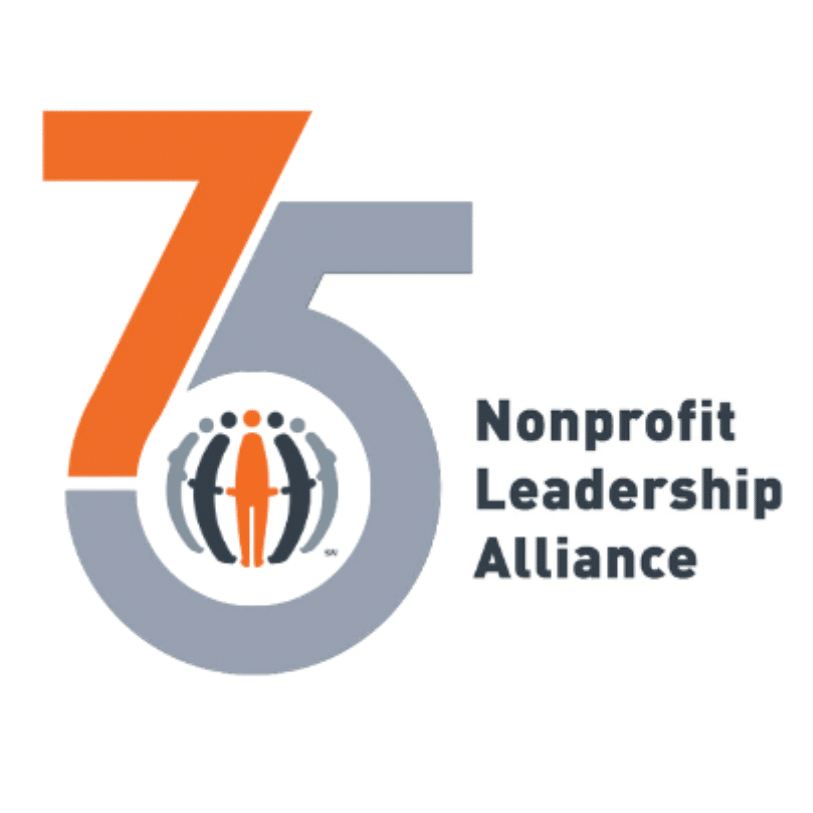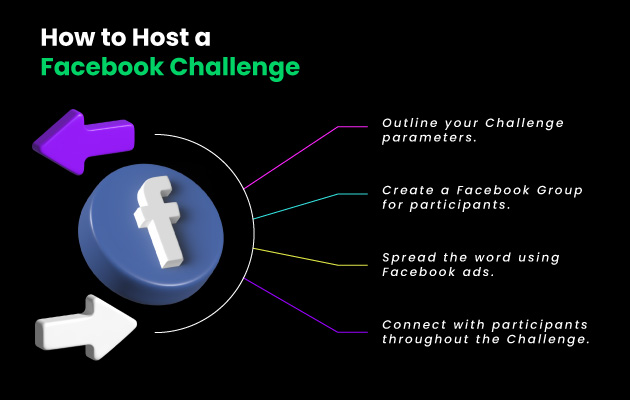Diversified revenue streams are crucial to your nonprofit’s sustainability and long-term growth, ensuring that you can continue fulfilling your mission year after year, even if one funding source temporarily runs dry.
Because of this, a key aspect of nonprofit management involves discovering and developing new funding sources for your organization. Alongside the rise of social media, Facebook Challenges have become a popular fundraising initiative for nonprofits of all sizes.
Whether you’re new to the world of Facebook Challenges or interested in optimizing your efforts on the platform, we’ll answer these key questions in this guide:
- What are Challenges on Facebook?
- Why should you incorporate Challenges on Facebook into your strategy?
- How do you host a Facebook Challenge?
According to Meta, fundraisers on Facebook and Instagram have raised over $7 billion for countless causes around the world. As social media-based fundraising continues to gain traction among both nonprofits and supporters alike, it’s time for all forward-thinking organizations to consider adding Challenges on Facebook to their fundraising toolkits.
What are Challenges on Facebook?
Facebook Challenges are similar in structure to a traditional peer-to-peer fundraising event. However, these fundraisers are entirely virtual, with everything occurring on Facebook’s platform. The process typically looks like this:
- Your nonprofit creates a Challenge with a specified activity, like running a mile, and a specified duration, such as 30 days.
- Supporters sign up for the Challenge and join a corresponding Facebook group to connect with and find encouragement from other participants.
- Participants complete the task throughout the Challenge duration while raising funds for your nonprofit through their individual Facebook fundraisers.
The virtual nature of Challenges on Facebook makes it easy for your organization to strengthen its connections with existing supporters and expand its reach by leveraging their personal social networks.
Case Study: The Trevor Project’s Facebook Challenge
The Trevor Project, a nonprofit dedicated to supporting the mental health of LGBTQ youth in the U.S., achieved astounding success with its very first Challenge on Facebook, surpassing its fundraising goal in just three days. The organization’s 50-Mile Walk/Run Facebook Challenge led to:
- 22,772 new leads to connect with on the platform
- $1.3 million raised on The Trevor Project’s behalf
Through its Challenge on Facebook, The Trevor Project was not only able to generate significant revenue to further its mission, but it was also able to build a stronger online community to support LGBTQ youth across the country. Due to its initial success, the nonprofit went on to create its second Facebook Challenge, raising over $1.5 million and reaching more than 32,000 Facebook group participants.
Why should you incorporate Challenges on Facebook into your strategy?
The Trevor Project’s Facebook Challenge results illustrate just how much impact this social media fundraising initiative can have on your nonprofit’s overall goals and mission. However, the advantages of Facebook Challenges go beyond just the revenue it can raise for your organization. Let’s explore two main reasons you should incorporate them into your fundraising strategy.
Facebook Challenges are Cost-effective
The cost of hosting a Challenge on Facebook tends to be much lower than traditional peer-to-peer fundraising events, making it an appealing option for nonprofits of all budget sizes. This is because Facebook Challenges are:
- Virtual. There’s no need to worry about investing in event space or decorations.
- Free from additional fees. Facebook covers all payment processing and administrative fees for fundraisers held on behalf of recognized nonprofits, so your organization gets to keep 100% of every donation made.
Challenges on Facebook are easy for supporters to join as well. All they need to participate is a Facebook account, which many people already have. Additionally, tools such as Facebook Groups and Messenger facilitate donor communications and stewardship, helping your nonprofit build strong, lasting connections.
Facebook Challenges are an Additive Fundraising Method
The cost of hosting a fundraiser extends beyond the actual funds you spend putting on the event. If your fundraiser pulls support away from your other initiatives or leads to a general sense of donor fatigue, this could decrease the revenue you generate overall.
Fortunately, Facebook Challenges are an additive fundraising method. According to GoodUnited’s guide to Challenges on Facebook, over 90% of Challenge participants are new to the organization and its cause. This means that you’ll be able to engage more potential supporters without diverting existing support from your other campaigns.
How do you host a Facebook Challenge?
If you’re ready to start incorporating Challenges on Facebook into your nonprofit fundraising strategy, use these steps to guide your efforts:
Alt Text: Follow the four steps detailed below to host a Challenge on Facebook for your nonprofit organization.
- Outline your Facebook Challenge parameters. This includes the dates during which it will run, your fundraising goals, and the Challenge activity that participants will carry out.
- Create a Facebook Group for participants to join. Choose a branded profile picture and cover photo to boost the Group’s credibility and include a clear description of the Challenge.
- Use Facebook Ads to spread the word. Facebook ads can be a highly effective way to promote your Facebook Challenge to users on the platform by targeting users with certain demographic characteristics. NPOInfo’s donor data management guide highlights several types of demographic data to focus on, including age, gender, location, and employment.
- Connect with participants throughout the Challenge. Build lasting relationships with your supporters by sharing discussion prompts, sending updates, and highlighting top participants in your Facebook Group. Additionally, you can use Facebook Messenger to engage in conversational messaging with individual users and connect with them on a more personal level.
Remember to follow up promptly with all of your supporters after the Challenge to thank them for their contributions. Share the specific impact that you were able to achieve with the funds they’ve raised, so they’ll stay motivated to participate in your organization’s future fundraising endeavors.
With the right approach, your nonprofit can generate significant revenue from Facebook’s fundraising tools. Once you’ve hosted your first Challenge on Facebook, take a look at your fundraising data to identify insights for inspiring more support and raising more funds. This way, you’ll be able to develop an online revenue stream that you can rely on for the long term.

